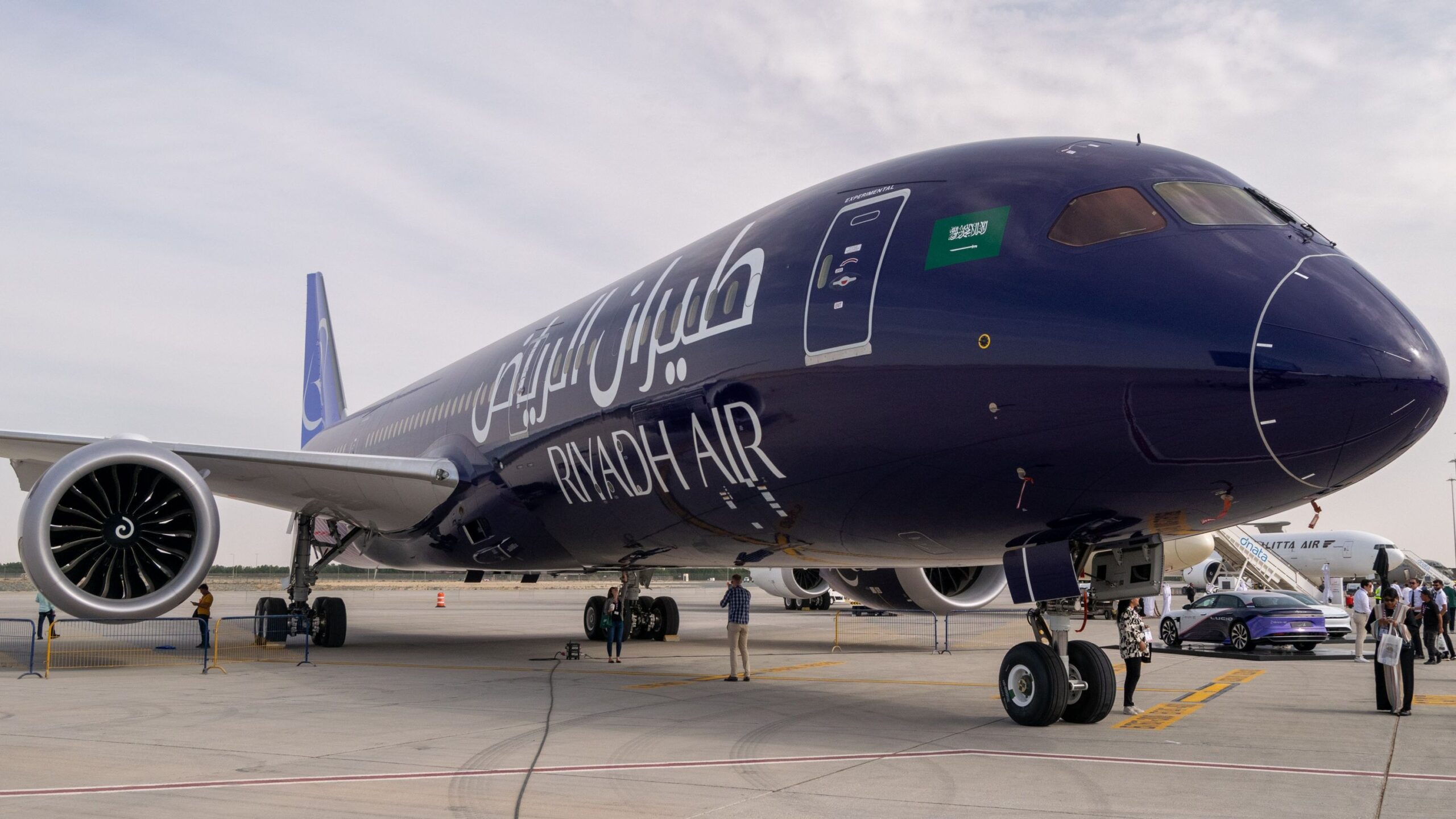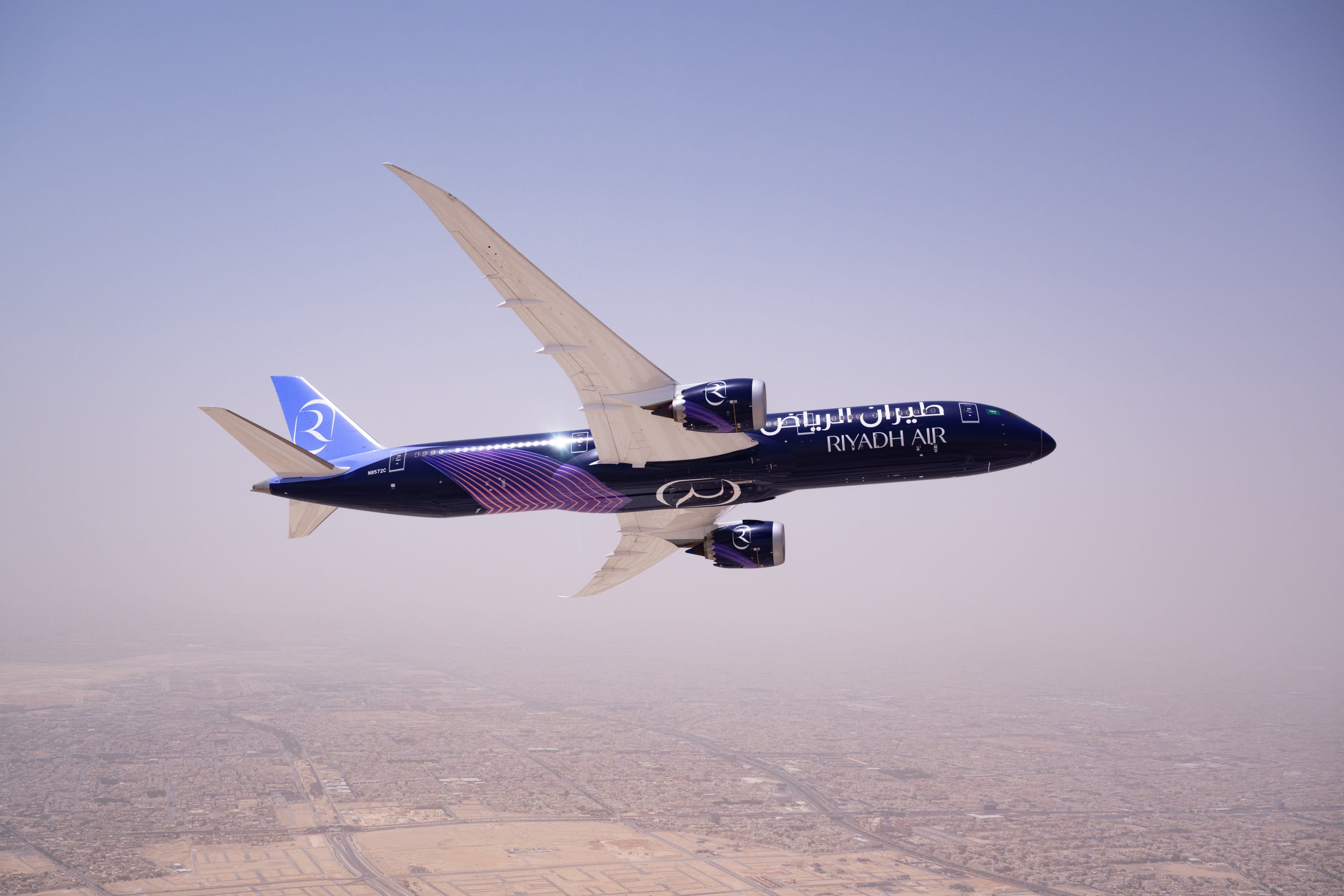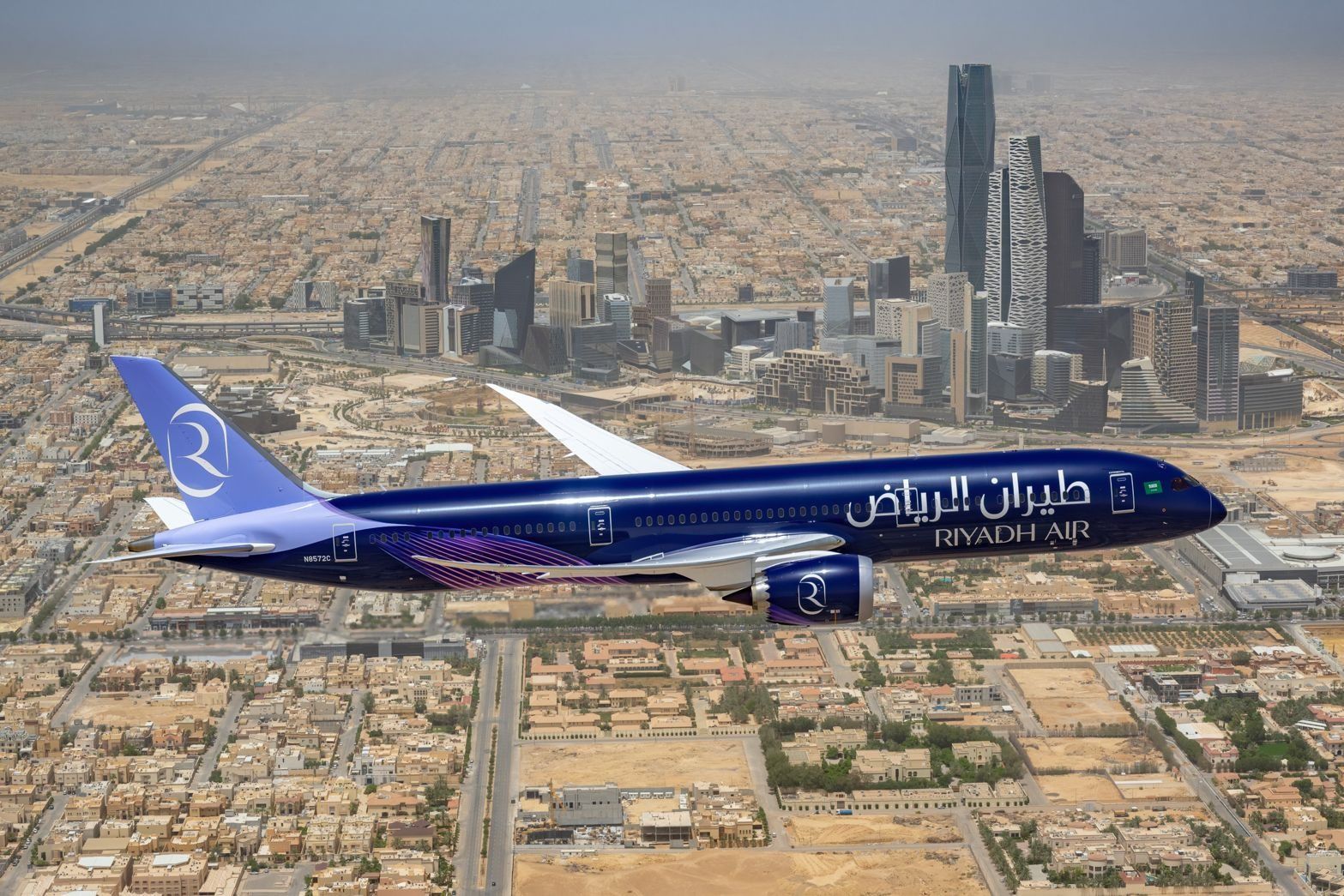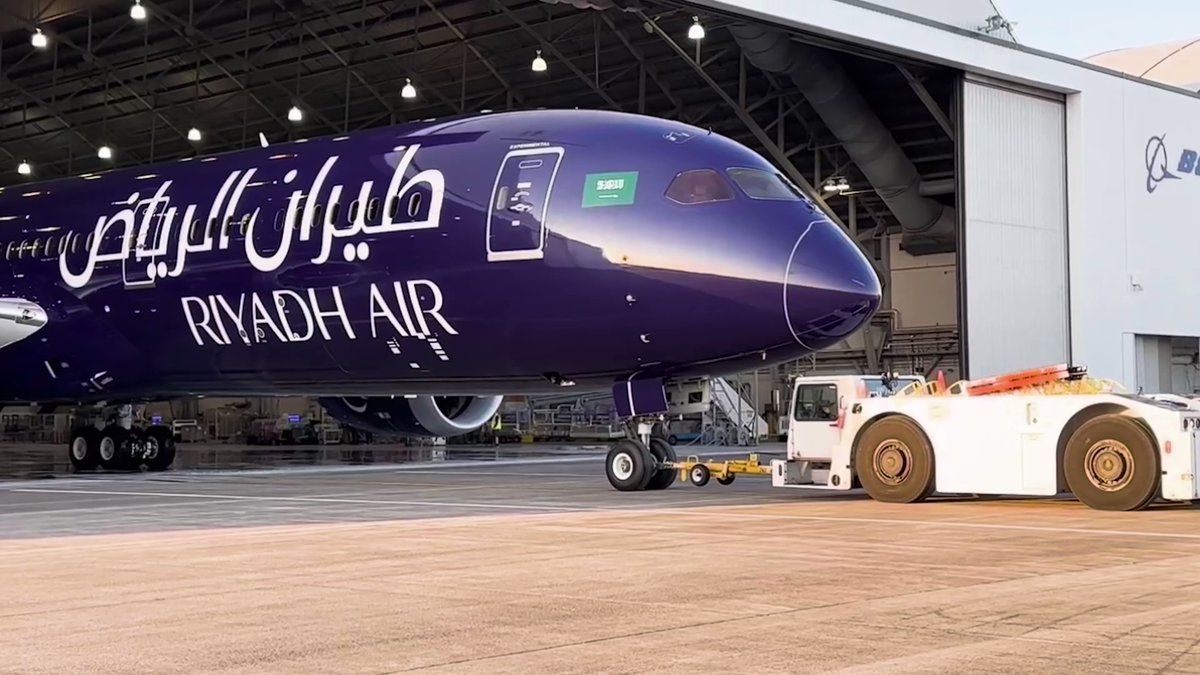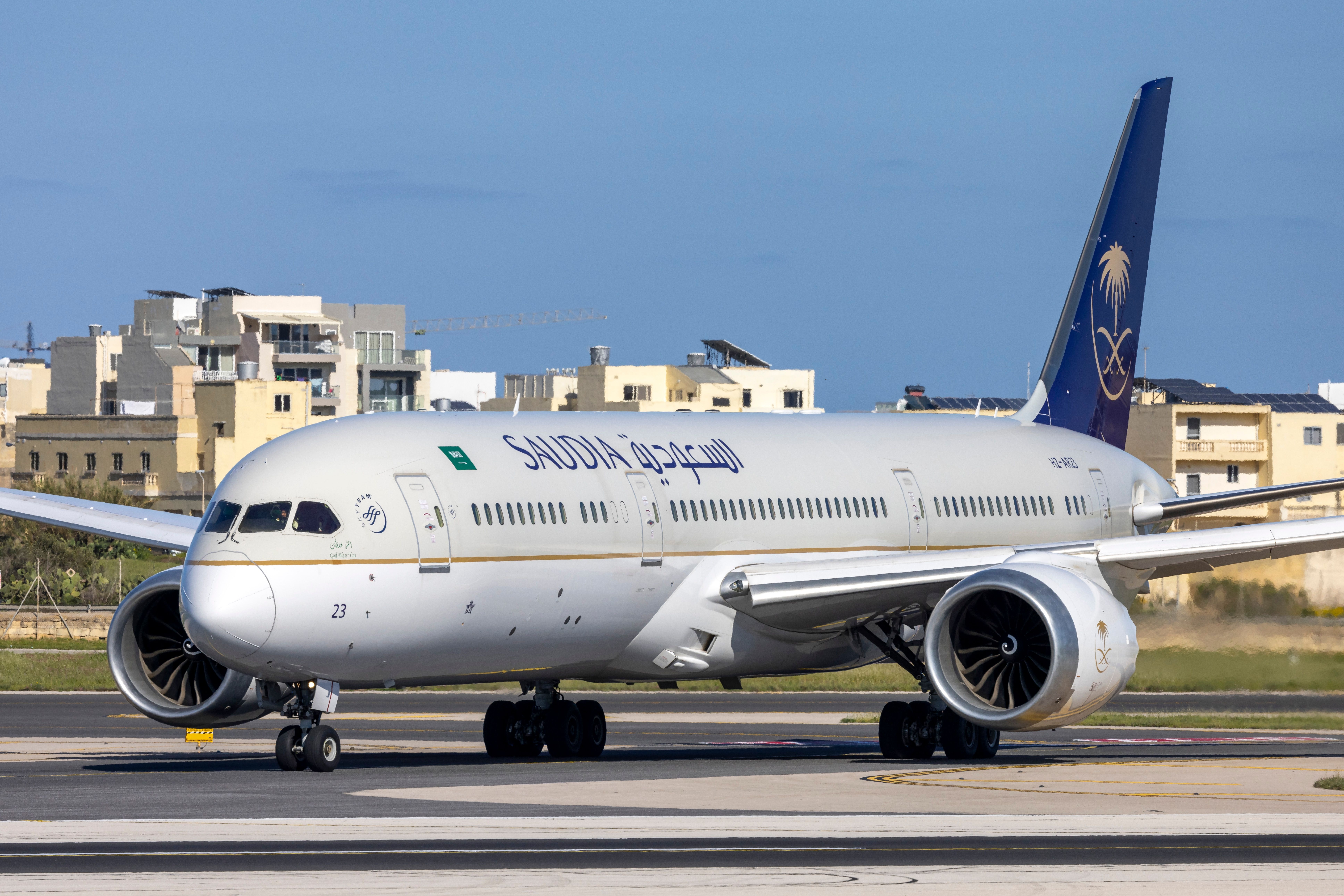Summary
- Certification flights begin in September and will run through November.
- Riyadh Air is planning to reveal its crew uniforms in Paris next month.
- The new national airline aims to operate to roughly 100 destinations by 2030.
Saudi Arabia’s newest national airline,
Riyadh Air
, recently revealed its intention to begin certification flights in September this year in advance of its launch, which is currently slated for the summer of 2025.
This marks the latest step in the carrier’s journey to begin operations, highlighted by an order for Boeing 787s last year. In addition, as reported by Simple Flying earlier this month, the carrier also plans to order new narrowbody aircraft in the near future.
Certification flights
An essential part of an airline’s journey to launch is the obtention of an air operator’s certificate. The airline must prove itself and its operational capabilities through certification flights to get it. Riyadh Air plans to do so between September and November. The carrier has also said that it has hired 38 pilots, including instructors, in the lead-up to these. Riyadh Air CEO Tony Douglas revealed this week at the Future Aviation Forum:
“We now have our first group of pilots who’ve joined us. So we’ve got over 30 instructor pilots, so they’re the highest qualified pilots you can get, from lots of different international airlines. They’re of course engaged with us at this stage to assist with our certification flying. And we’ll start our certification flying in September of this year. So literally months away now.”
Photo: Riyadh Air
The executive also revealed that earlier this week, the carrier’s third batch of cabin crew had started with them.
Cabin crew fashion in Paris
In stark contrast to low-cost airlines, for example, Riyadh Air emphasizes the quality and style of its cabin crew uniforms, so much so that they will be revealed at Paris Fashion Week in June. The CEO said:
“So our cabin crew won’t wear cabin crew uniforms. It’ll be cabin crew fashion. It will be a unique color and it will be a color that will be in the future, instantly recognizable as the Riyadh color. We want to get that kind of glamor into aviation to make sure that this brand, because of course the brand is Riyadh, wherever it’s identified around the world, immediately speaks to quality, grace, refinement and fashion.”
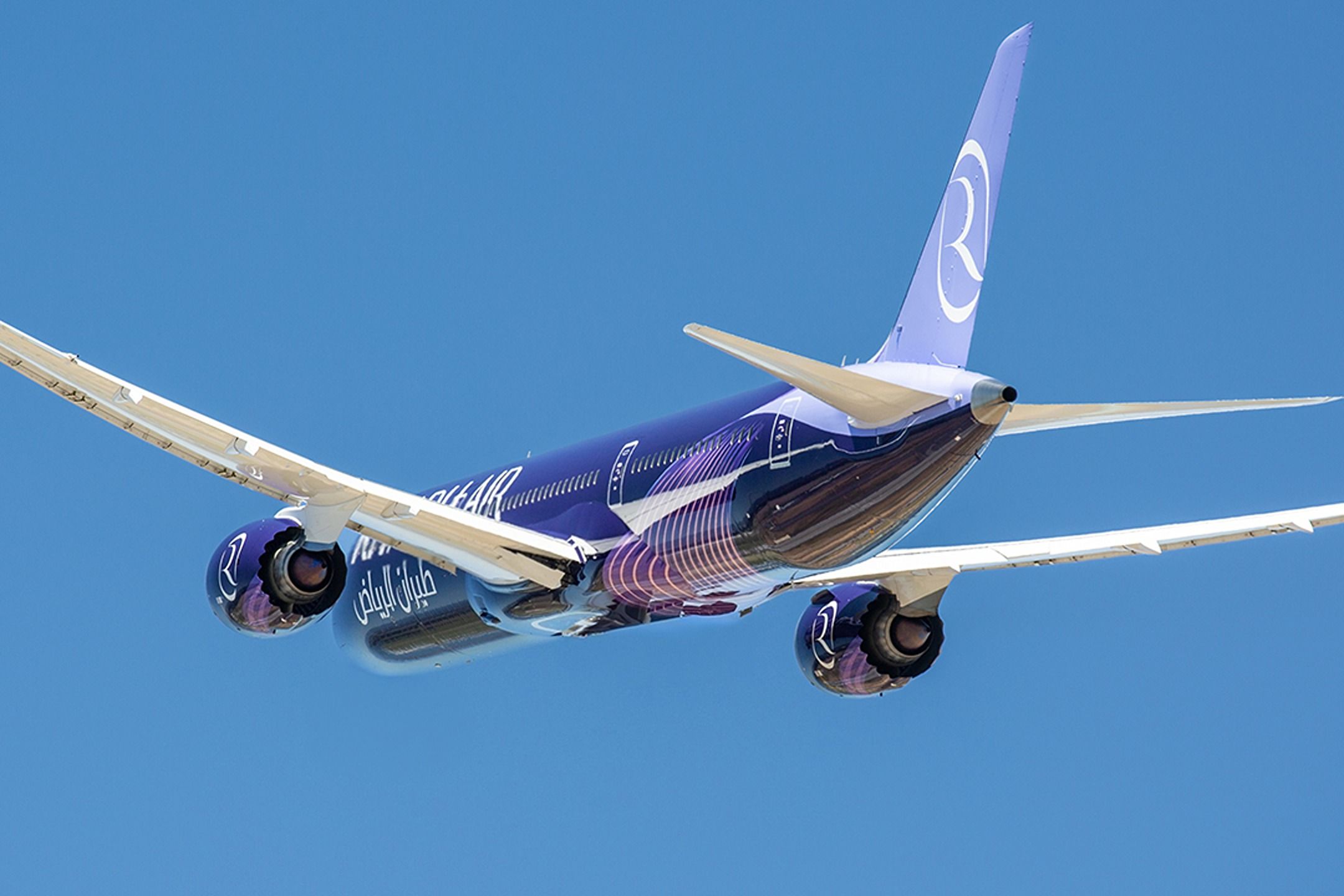
Related
How Tony Douglas Is Building Riyadh Air To Be A Better Airline
Getting to grips with a brand-new airline is a dream come true for Riyadh Air’s CEO.
The airline also anticipates moving into its new headquarters in Riyadh this summer and plans to make its mark at the airport by lighting its logo “up in the skyline.”
“Our brand-new headquarters building will be available for us to start to occupy in the summer of this year. And just out by Riyadh International Airport people will see the biggest brand logo lit up in the skyline probably in the next two months and that’s when you will know where the home of the Riyadh Air family is.”
Photo: Riyadh Air
Are Saudia and Riyadh Air going head-to-head?
In March last year, the Crown Prince of Saudi Arabia, Mohammad bin Salman, officially launched Riyadh Air, which is set to become the country’s newest national carrier. The launch of the new carrier means the country will have two national airlines:
Saudia
and Riyadh Air.
Rather than compete against each other, both will develop in tandem and from different hubs. It is understood that while Riyadh Air’s focus will naturally be on the capital, Saudia will place its bets on the port city of Jeddah, known as a gateway to the Islamic holy cities of Mecca and Medina. In other words, Saudia’s focus is primarily religious, while Riyadh Air will point itself towards an objective of international connectivity for Saudi Arabia.
As noted by John Grant in a report for AGBI at the time of Riyadh Air’s launch last year, Saudia’s brand is not what it used to be:
“Few would link these [positive] descriptions with the current Saudia operation which for too many years has struggled with its identity, purpose, and brand values.”
Rather than shut it down, the decision to assign Saudia to Jeddah means it can better consolidate its operation, grow at a healthy rate, and simplify its overall commercial ambitions. It will also grow in Medina, one of the most sacred cities in Islam. In essence, the country’s new aviation strategy seems to allow religious traffic (which for Saudi Arabia is both very important and lucrative) to be covered by a single entity. Commenting on Riyadh Air’s role, Douglas said:
“We’ve a need to get from Riyadh – the capital city – far greater connectivity. We’re going to connect to way over 100 destinations by 2030.”
Photo: Riyadh Air
To reach this goal, Riyadh Air plans to launch an average of two new destinations per month until 2030 and anticipates roughly 10 largely international destinations by the end of its first year.
The Saudi Arabian aircraft fleet
The Saudi Arabian aircraft fleet is projected to grow rapidly over the next few years as deliveries and orders continue to roll in. Saudia, for instance, has outstanding orders that would almost double its current fleet of 163 aircraft per ch-aviation. These include commitments for 121 new aircraft of which details are listed below.
|
Aircraft |
Number |
|
Boeing 787-9 |
18 |
|
Boeing 787-10 |
21 |
|
Airbus A321XLR |
15 |
|
Airbus A321neo |
67 |
These aircraft will allow Saudia to pursue additional growth and draw in religious traffic both internationally and regionally. The Boeing 787-10 is particularly important to this strategy, given its higher-density layout. It has 357 seats compared to 298 on the 787-9. Once deliveries are fully completed, Saudia plans to have around 30 of each of the -9 and -10 variants. Equally important are the airline’s 19 Airbus A330-300s in a dense, 440-seat layout destined for pilgrimage flights.
Photo: InsectWorld | Shutterstock
Riyadh Air signed for 39 Boeing 787-9 aircraft with options for an additional 33 back in March last year, meaning up to 72 planes are on Riyadh Air’s orderbook. At the time, Douglas said:
“By positioning the airline as both a global connector and a vehicle to drive tourist and business travel to Saudi Arabia, our new 787-9 airplanes will serve as a foundation for our worldwide operations, as we build the wider network and connect our guests to Saudi Arabia and many destinations around the world.”
Earlier this month, Chief Commercial Officer Vincent Coste revealed that Riyadh Air was considering placing an order for narrowbody jets “within the coming weeks.”
Saudi Arabia plans to invest heavily in aviation as part of its Vision 2030 plan, which will see the country move away from oil and diversify its economy. Time will tell whether Riyadh Air will be able to compete effectively against the other airlines in the region—Qatar Airways, Emirates, and Etihad—and whether Saudia’s repositioning will bear fruit.
What do you think about Riyadh Air? Let us know in the comments below.

